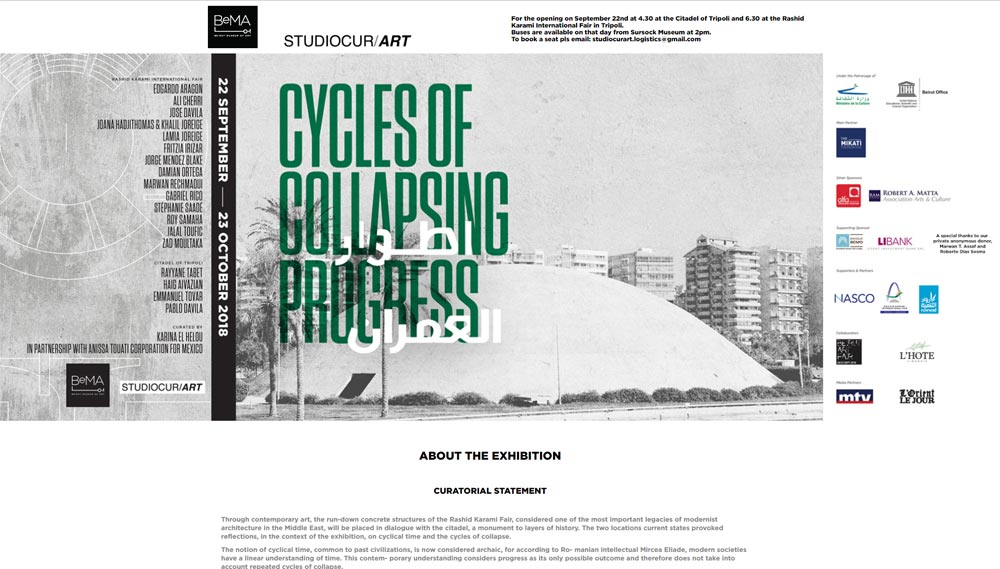
Category: web
Oct 4
tripoliniemeyer2018.com
Through contemporary art, the run-down concrete structures of the Rashid Karami Fair, considered one of the most important legacies of modernist architecture in the Middle East, will be placed in dialogue with the citadel, a monument to layers of history. The two locations current states provoked reflections, in the context of the exhibition, on cyclical time and the cycles of collapse.
The notion of cyclical time, common to past civilizations, is now considered archaic, for according to Ro- manian intellectual Mircea Eliade, modern societies have a linear understanding of time. This contem- porary understanding considers progress as its only possible outcome and therefore does not take into account repeated cycles of collapse.
The contemplation of the cyclical life and death of civilisations can be traced back to the medieval Tunisian-born historian Ibn Khaldoun, who suggested that historical cycles function in a loop, starting as Umran Badaoui (bedouin civilisation) evolving into Umran Hadari (urban civilisation) before collapsing. Recent studies by American historian Joseph Tainter on the collapse of complex societies, such as the ancient Egyptians, Greeks and Mayans, show that there are several possible causes for their downfall, including natural disasters, wars, and epidemics. But one theory can be singled out. When a society becomes highly stratified, it is more likely to fall, as the cost of maintaining it is high.
In the post-modern world (although the sociologist Bruno Latour has suggested in the title of his book that ‘we have never been modern’) scientists affirm that since the beginning of the anthropocene era, our future decline will be caused by an impending ecological disaster due to global warming. If human beings, nature, and even history function cyclically, it’s possible to think about the limits of progress and the costs that entails.
The exhibition presents 19 projects in total, including 10 commissioned artworks as well as 9 produced works by artists from Lebanon and Mexico. The meeting of these two scenes allows for the exchange of geographical perspectives on the theme. This project includes residencies in Beirut by Edgardo Aragon, Fritzia Irizar and Gabriel Rico at BAR-Beirut Art Residency, and in Guadalajara by Marwan Rechmaoui and Stephanie Saadé at PAOS GDL residency.


